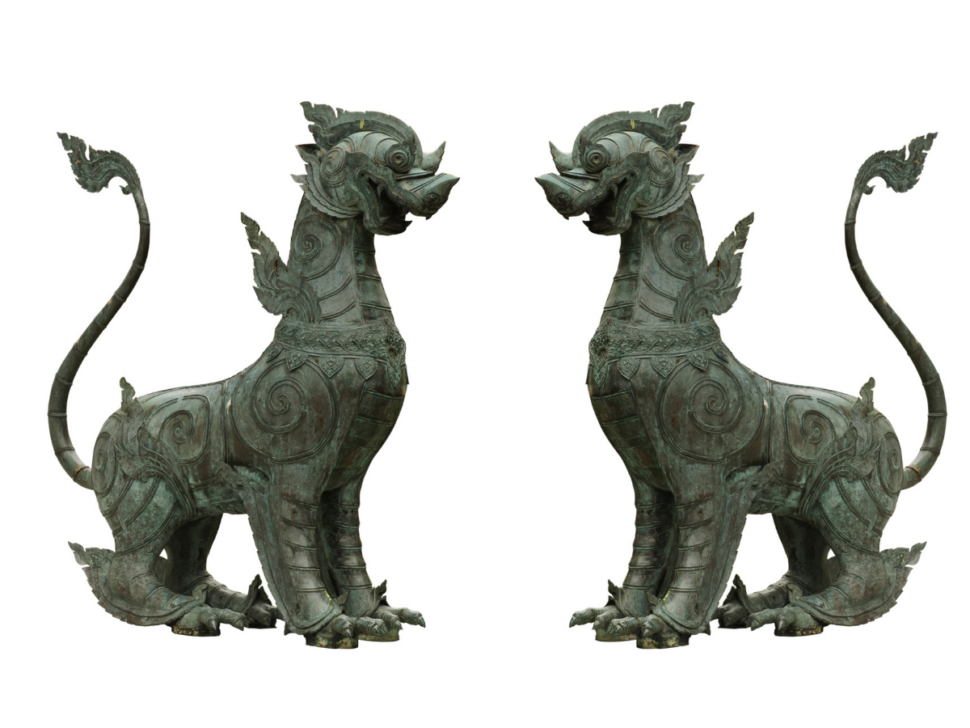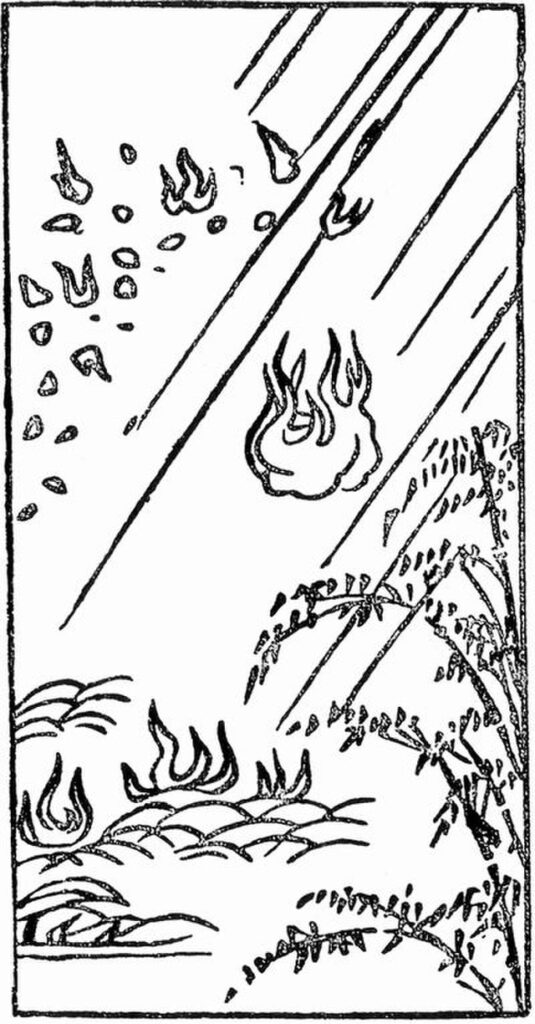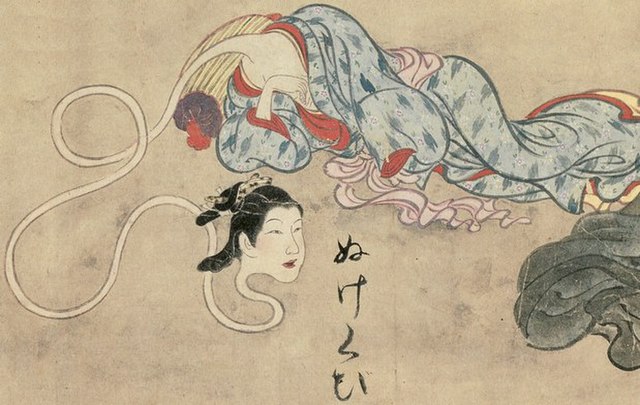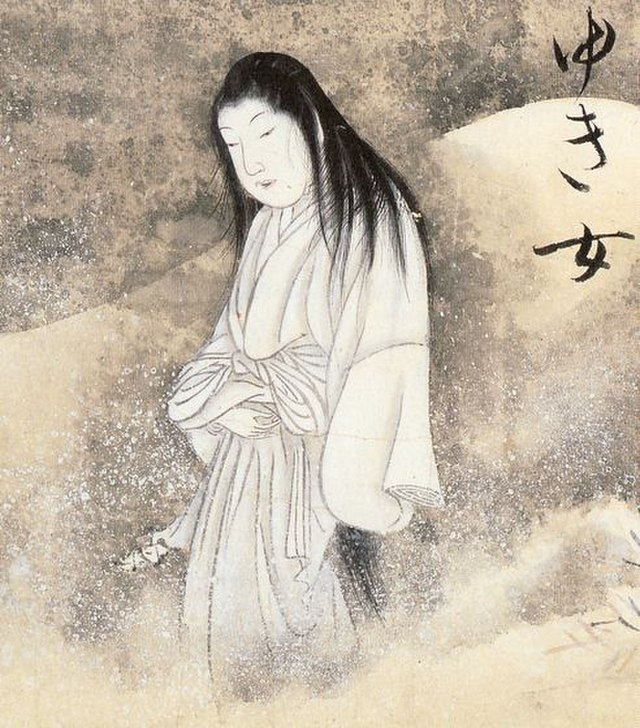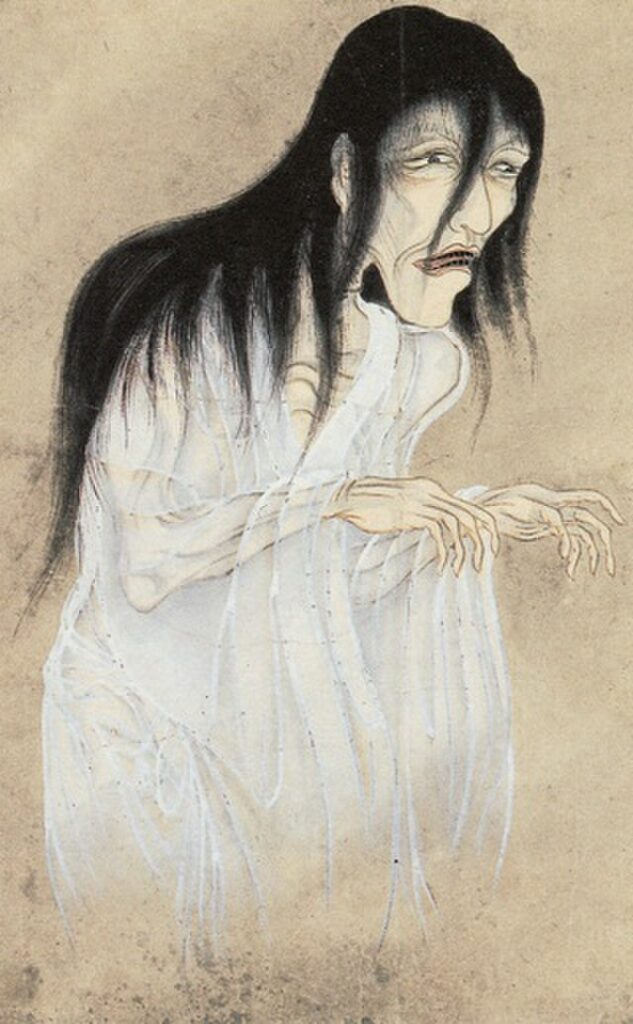20 Well-Known Yokai in Japanese Folklore
Like every other country, a lot of Japan’s culture comes from its folklore and mythology. These myths have been passed down for hundreds of years and have become ingrained in Japanese culture. Whether a person is superstitious or not, they cannot deny the impact that myths have had on Japan, even in modern times. Along with shaping the culture of Japan, these myths have also given us supernatural entities known as yokai (妖怪, ようかい). There are hundreds of yokai in Japan’s mythology, but today we will be looking at 20 of the most popular yokai.
 Aka Manto © MatthewHoobin / wikicommons/ CC BY-SA 4.0
Aka Manto © MatthewHoobin / wikicommons/ CC BY-SA 4.0
Aka Manto (赤マント, あかマント)
Aka Manto means “Red Cloak” or “Red Cape.” Aka Manto is a spirit who wears a mask and a red cloak. The spirit, usually male, appears to people, mostly young women, in public bathrooms. Some legends say he only haunts the last stall in a bathroom. Aka Manto is thought to be very handsome under his mask, but do not be fooled by his charm. According to the legend, when the spirit appears, he will ask his victim whether they want red or blue paper (sometimes cloaks, depending on the story). If one chooses the red paper, their body will be lacerated until they bleed out and die. If they choose the blue paper, they are strangled until they turn blue and suffocate. If one tries to outsmart him and ask for a different color, the floor will open up and Aka Manto will drag them to the underworld. It is believed if one asks for a yellow paper, however, he will shove their head into the toilet, though may not kill them. In order to escape any of these fates, the victim must ignore the choice and run away or refuse to take either.
Amabie (アマビエ)
Amabie are friendly mermaid-like creatures with long hair, scales, a bird beak, and three tail fins. When an Amabie emerges from the sea, it prophesizes about good harvests and/or impending pandemics. According to the legend, Amabie encourage people to draw their likeness on paper and share the image with as many people as they can in order to ward off illnesses. The legend of the Amabie began in 1846 and its story was immortalized on a woodblock print. The story states that there was a glowing light spotted in the sea at night. When a guard went out to investigate, the Amabie emerged from the water and predicted a good harvest for years to come, and advised the man to draw a picture of itself to prevent sickness. From there the legend spread. The Amabie recently had a resurgence in popularity as many people began to spread its image as a token of good health during the COVID-19 pandemic.
Gashadokuro (餓者髑髏, がしゃどくろ)
Gashadokuro translates to “starving skeleton” and refers to spirits who take the form of massive skeletons. When people do not get proper funeral rites and burials, such as soldiers on the battlefield, or those who die from poverty or famine, it is believed their souls remain on earth due to their anger and resentment. When enough angry souls have gathered enough decayed and skeletonized body parts, a Gashadokuro is formed. Gashadokuro are described as being 10 meters tall, have protruding eyes, and make a clattering sound as they approach. They wander desolate areas like the countryside in the middle of the night, especially around 2am. If they see a person, they will sneak up on them, attack them, and eat them. They cannot be killed but can be warded off with charms. A Gashadokuro only dies when all its anger has been released, then its bones will crumble.
Hitotsume-kozō (一つ目小僧, ひとつめこぞう)
Hitotsume-kozō appear as bald-headed children with one large eye, like a cyclops. Because of their shaved heads and clothing, the Hitotsume-kozō are said to look like little monks in training. Hitotsume-kozō are more-or-less harmless, though they are mischievous. They tend to appear suddenly in order to startle people and are usually found alone on dark streets. They are often described as carrying a lit lantern or a plate of tofu.
Jorōgumo (絡新婦, じょろうぐも)
The Jorōgumo is a spider yokai that can take on the form of a beautiful woman. She targets men looking for love and sex and will seduce them into coming back to her home. Once there, she ensnares him in her web and poisons him until he grows weaker and she can feast on him. Similar to the Jorōgumo is the Tsuchigumo (土蜘蛛, つちぐも). Tsuchigumo are giant spider-like creatures. They are described as having the body of a tiger, the legs of a spider, and the face of an oni or demon, though in a lot of art, they are just drawn as giant spider monsters. Tsuchigumo live in mountain caves and forests. They hunt down people walking alone at night, capture them in their webs, and eat them.
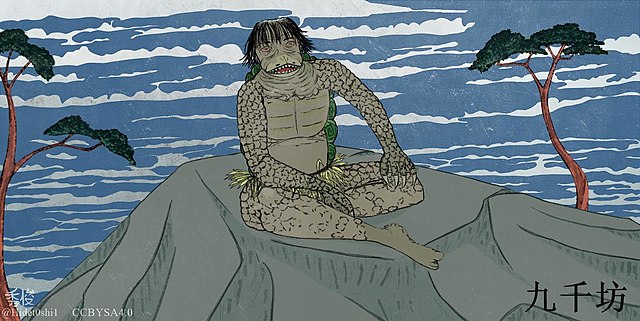 Kuzenbo illustration by Hidetoshi © Di (they-them) / wikicommons/ CC BY-SA 4.0
Kuzenbo illustration by Hidetoshi © Di (they-them) / wikicommons/ CC BY-SA 4.0
Kappa (河童, かっぱ)
Kappa are one of the most well-known yokai–but they're actually kami (gods). They are humanoid amphibians who live in rivers, and are known for drowning humans in rivers, especially when they are not respected as deities. They are small, like a child, but have incredible strength. They have webbed hands and feet, scaly skin in shades of green or red, a beak for a mouth, and a shell on their back. The most notable part of the Kappa’s appearance is the bowl or bowl-like indentation on top of their heads. This bowl is filled with water and must remain filled with water. If the water spills, the Kappa will lose its supernatural powers, or even die.
Kirin (麒麟, きりん)
Kirin come from Qilin in Chinese mythology. The kirin is described as a chimerical creature similar to a unicorn. It has the body of a deer, dragon scales, horse hooves and mane, and an ox’s tail. Kirin are believed to be the most powerful creatures in Japanese folklore. Even so, they are serene, majestic, and good. They will not hurt another living, good soul, and will even walk above grass in order not to hurt it. They will, however, attack those with wicked souls by breathing fire. Kirin are incredibly rare and only appear during times of great peace. The Japanese word for giraffe, also kirin, comes from this creature.
Kitsune (狐, キツネ)
Kitsune is the Japanese word for fox, and Kitsune in Japanese mythology are foxes that possess supernatural abilities. These powers increase as the foxes grow older and wiser. The wiser and more powerful they become, the more tails they will grow. Foxes have a significant role in Japanese mythology. They are believed to be shapeshifters that can turn into humans, and are the messengers to the god Inari. They are known both as tricksters and as loyal guardians.
Kuchisake-onna (口裂け女, くちさけおんな)
The Kuchisake-onna is known as the slit-mouthed woman. She is a malevolent spirit that takes the form of a beautiful woman. She is described as pale-skinned, with long black hair, and a bloody slit across her mouth that runs from ear to ear. She appears at night, in dark alleys or vacant streets, to lone travelers. She often wears a mask or covers her face with a fan. When she approaches her victim, she will ask,「 私綺麗?」(わたしきれい, watashi kirei), meaning, "Am I beautiful?" If the person says no, she will kill them with a pair of scissors that she always carries. If the person says yes, she will lower her mask or fan, and repeat the question, or ask,「 これでも?」(kore demo), meaning "Even like this?" If they say no or scream in terror, she will kill them. If they still say yes, she will use her scissors to give her victim the same ear-to-ear gash. It is believed that people can escape the Kuchisake-onna by telling her she is “average-looking” or giving her a confusing answer and running away. Another popular belief is that she loves hard candy and money. If the victim throws these items, it will distract the Kuchisake-onna, and they can escape.
Obake (お化け, おばけ)
Obake are also known as Bakemono, which means “thing that changes.” As the name suggests, Obake are shapeshifters. They are usually the spirit of an animal or a plant, but can take on the form of other things, from humans to inanimate objects. Kitsune fit into the category of Obake. Another well-known Obake is the Tanuki, the Japanese raccoon dog. Its Obake is known as Bakedanuki (化け狸, ばけだぬき). Cat Obake are known as Bakeneko (化け猫, ばけねこ).
Nekomata (猫又, ねこまた)
Nekomata are born from Bakeneko. When a Nekomata is born, the cat’s tail splits into two. Unlike Bakeneko, who can be either good or bad, all Nekomata are malicious. They live in the mountains and look down on humans. They can summon fire, control the dead, and shapeshift. They are known to walk on their hindlegs and have the ability to speak.
Oni (鬼, おに)
Oni are similar to ogres, trolls, and orcs. They are massive and muscular, taller than any human. They are described as having red or blue skin, wild hair, and horns growing out of their heads. It is believed that people who are evil and wicked turn into Oni after they die. They carry giant clubs and enjoy torturing, murdering and cannibalizing the souls of sinners.
Onibi (鬼火, おにび)
Unlike most yokai, Onibi do not come in the form of a living creature. The name translates to “demon fire” and they are known as ghost lights since they are born from the souls of deceased humans and animals. Their appearances can vary; they come in shades of blue and white to red and yellow and can be as small as a candle flame or bigger than a person. They typically stick to wetlands, fields, or cemeteries, and come out most often when it rains.
Rokurokubi (轆轤首, ろくろくび)
Rokurokubi appear as ordinary women. However, at night, when their bodies are asleep, their necks can stretch to great lengths and their heads can move on their own. It is believed that Rokurokubi were once ordinary humans–specifically women–who had a curse placed upon them. Rokurokubi are mostly harmless, though they have been known to lick up all the oil from lamps. A Nukekubi (抜け首, ぬけくび) is a type of Rokurokubi who is able to detach their head entirely from their neck. The head can then float around on its own and cause mischief.
Tengu (天狗, てんぐ)
Tengu are one of the most recognized creatures in Japanese culture. Their name translates to “heavenly dog,” though they were believed to originally take the form of birds or monkeys. Because of this, Tengu are depicted with birdlike features, most notably a long nose similar to a bird’s beak. They often have bright red faces and sometimes have bird-like wings. They also have supernatural abilities, incredible strength, and great martial arts skills. Tengu were thought to be wicked and symbols of bad things to come. They were known for kidnapping people in the mountains and torturing them. However, they are also known as protective guardians who will sometimes teach humans magic. They live in the mountains and are very protective of their homes.
Tsukumogami (付喪神, つくもがみ)
Tsukumogami are Obake that possess inanimate objects rather than living things. The name literally translates to “tool kami” or “tool god.” The most famous Tsukumogami is the Kasa-Obake (傘おばけ, かさおばけ), which is a spirit that possesses old umbrellas. Kasa-Obake are silly and playful spirits with one large eye and a long tongue. Other popular Tsukumogami include Chōchinobake (提灯お化け, ちょうちんおばけ), a lantern spirit, and Bakezōri (化け草履, ばけぞうり), a zori (sandal) spirit.
Yamauba (山姥, やまうば)
Yamauba are also known as Yamamba or Yamanba, which all translate roughly to "mountain crone." Yamauba are unkempt, old women with long, messy white hair and tattered clothes. They live alone in huts or caves in the mountains and forests and wait for travelers to cross their path. When they do, they act like kind, old women and offer the traveler food and a place to rest for the night. When the traveler has fallen asleep, the Yamauba attacks and eats them. Some believe that Yamauba are created when a young woman is accused of a crime and she flees society. After years of exile, the women begin to change, sometimes even growing horns, until they fully transform into Yamauba. Like similar stories in other cultures, yamauba are used as a cautionary tale toward children to ensure that they behave.
Yuki-onna (雪女, ゆきおんな)
Yuki-onna translates to “snow woman,” and is described as a ghostly woman seen by travelers lost in the snow. Yuki-onna have long dark hair, blue lips, and eyes that are said to strike fear into any who look. With pale, almost translucent skin and a white kimono, it is easy for Yuki-onna to move undetected in snowstorms. They do not leave footprints in the snow and can turn to mist if threatened. Yuki-onna were once described as wholly evil and capable of murdering unsuspecting travelers. However, in modern times, they have become known as slightly more sympathetic spirits.
Yūrei (幽霊, ゆうれい)
Yūrei are the closest yokai to ghosts. They are the spirits of the undead who were unable to pass over to the other side due to unfinished business or a curse. They most often haunt graveyards or the place of their death and are unable to leave until their business has been completed. They are described as being transparent and sometimes have bloody marks on their body where they were killed. They are often depicted as wearing a white burial kimono known as a kyōkatabira (経帷子, きょうかたびら) and a hitaikakushi (額隠し, ひたいかくし), a white triangular piece of cloth worn on the forehead.
Zashiki Warashi (座敷童子, ざしきわらし)
Zashiki Warashi are beloved tricksters that are known for pulling pranks. They are child-like in appearance, though they are rarely seen. The most common sign of them is small footprints made from stepping in ash or powder. When they are spotted, it is believed to be a sign of good luck. They live in homes, specifically in the zashiki, a traditional parlor-type room with tatami mats. Since they live in the homes of humans, those who spot them will receive good fortune for the entire household. Even though they enjoy mischief and tricks, they are seen as guardians of the homes they reside in.




